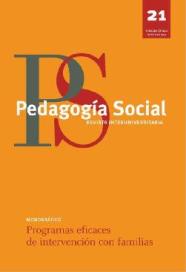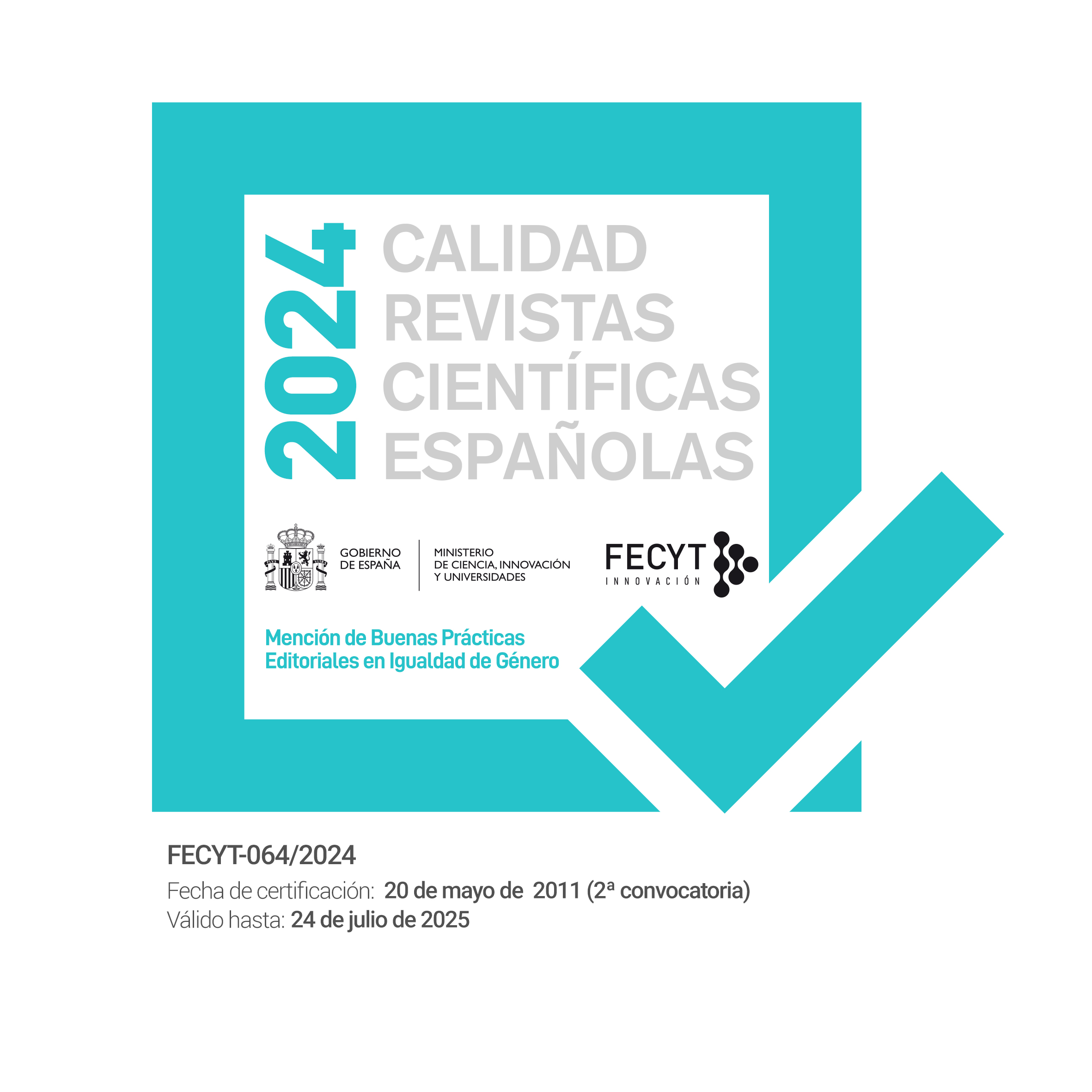Ser ou não ser visível na Universidade. Um estudo sobre as professoras
DOI:
https://doi.org/10.7179/PSRI_2013.21.09Palavras-chave:
Visibilidade, universidades, docência, investigação, gestãoResumo
Este artigo explora as dimensões e condicionantes que incidemna visibilidade do professorado emfunção do gênero. Foi adotada umametodologia qualitativa. Para tal, foramutilizados trêsmétodos de coletade dados criados pela equipe de investigação. Forameles a entrevista semiestruturada, o grupo de discussãoe a análise de documentos. A informação coletada provémde vinte e duas entrevistas realizadas comacadêmicosde duas universidades; de dois grupos de discussão com sete participantes cada um; e da análise dossites institucionais, políticas de gênero e projetos estratégicos para a igualdade de oportunidades.A análise de informações nos levou a identificar três grandes categorias de causas de visibilidade. Estascategorias são: as causas relacionadas com as características das próprias professoras e culturais do ambienteno qual se estuda a visibilidade e as causas resultantes da função que elas desempenham: ensino, investigaçãoe gestão.Emfunção dos resultados obtidos nesta investigação conclui-se que a visibilidade emfunção do gênero,como objeto de estudo, proporciona compreensão sobre o funcionamento das universidades e o papel degênero no desenvolvimento profissional do corpo docente.Aomesmo tempo, este artigo constitui umpontode partida para desenvolvimentos futuros sobre o assunto e uma base que serve para fundamentar possíveispolíticas e práticas universitárias no futuro.Downloads
Referências
Alberdi, I. (1985). La interiorización de los roles y la formación de los géneros en el sistema escolar: El papel de los ense-antes. En VV.AA. Primeras jornadas Mujer y Educación (pp.34-48). Madrid: Ministerio de Cultura. Instituto de la mujer.
Ardener, E (1989). The Interpretation of Ritual. London: Tavistock.
Arranz, F. (2001). Hombres y mujeres en el profesorado: un análisis de género en las académicas. En M.A. García de León y M. García de Cortázar, Profesorado universitario y género. (pp. 337-404). Madrid: Instituto de la mujer.
Bagilhole, B., & White, K. (2003). Created in their image: An analysis of male cultural hegemony in higher education in Australian and the United Kingdom. In B. Groombridge & V. Mackie (eds.). Re-searching research agendas: women, research and publication in higher education. Proceedings of the Australian Technology network-women's executive development (ATN-WEXDEV) 2003. (pp.1-12). Research Conference Perth: Curtin University of Technology Learning Support Network Brooks, A. (1997). Academic women. Buckingham: Society for Research into Higher Education Series (SRHE) and Open University Press.
Bagilhole, B. & Goode, J. (2001). The Contradiction of the Myth of Individual Merit, and the Reality of a Patriarchal Support System in Academic Careers: A Feminist Investigation. European Journal of Women's Studies, 8, 161-175.
http://dx.doi.org/10.1177/135050680100800203
Baldi, S. (1998). Normative versus social constructivist processes in the allocation of citations: A Network-Analityc model. American Sociological, 63(6), 829-46.
http://dx.doi.org/10.2307/2657504
Brooks, A. & Mackinnon, A. (2001). Gender and the Restructured University, The Society for Research into Higher Education & Open. University Press: Buckingham.
Chanana, K. (2003). Visibility, gender, and the careers of women faculty in an Indian university. Journal of Education, 38(3), 38 1 -389.
Deem, R., & Morley, L. (2006). Diversity in the academy? Staff and senior manager perceptions of equality policies in six contemporary UK higher education institutions. Policy Futures, 4(2), 185-202.
http://dx.doi.org/10.2304/pfie.2006.4.2.185
Dube, L., et al (1986). Visibility and power: Essays on women in society and development. New Delhi: Oxford University Press.
PMCid:PMC323185
Escolano, E. (2006). Entre la discriminación y el mérito: las profesoras en las universidades valencianas. València: Publicacions de la Universitat de València.
European Commission (2009): Gender Equality. Retrieved from http://ec.europa.eu/social/main.jsp?langId=en&catId=418
Fairén, S. (2003). Visibilidad y percepción del entorno. Análisis de la distribución del arte rupestre esquemático mediante sistemas de información geográfica. Alicante: Universidad de Alicante.
Hausmann, R, Tyson, L.D., & Zahidi,S. (2011). Insight Report The Global Gender Gap Report2011Global Gender Gap Report 2011. Géneva, Switzerland: World Economic Forum. Committed to improving the State of the World.
Instituto de Formación del Profesorado, Investigación e Innovación Educativa (2010). Plan de actuaciones. Madrid: MEC.
International Standard Classification On Education (Isced) (2007). Education at a Glance. Retrieved from http://stats.oecd.org/glossary/detail.asp?ID=1436
Joyner, K., & Preston, A. (1998). Gender differences in perceptions of leadership role, performance and culture in a university: A case study. International Review of Women and Leadership, 4(2), 34-43.
Lips, H. M. & Keener, E. (2007). Effects of Gender and Dominance on Leadership Emergence: Incentives Make a Difference. Sex Roles. 56 (9-10), 12-23.
http://dx.doi.org/10.1007/s11199-007-9210-8
Long, J. S. (1992). Measures of sex differences in scientific productivity. Social Force, 7, 9-17.
Park, S. M. (1996). Research, teaching and service. Why shouldn't women's work count? Journal of Higher Education, 67(1), 46-84.
http://dx.doi.org/10.2307/2943903
Raddom, A. (2002). Mothers in the Academy: positioned and positioning within discourses of the 'successful academic' and the 'good mother. Studies in Higher Education Volume 27(4), 387-403.
http://dx.doi.org/10.1080/0307507022000011516
Rincon, D. et al. (1995). Técnicas de investigación en ciencias sociales. Madrid: Dykinson.
Sáez, J., & García, A. (1997). El conocimiento de las mujeres: algunas consideraciones metodológicas. Pedagogía Social. Revista Interuniversitaria, 15-16, 23-35.
Sánchez Moreno, M. Y López Yá-ez, J. (2008). Poder y liderazgo de mujeres responsables de Instituciones Universitarias. Revista Espa-ola de Pedagogía, 240, 345-363.
Stephan, P & Levin, L. (1992). Striking the mother lode in Science. The importance of age, place and time. Oxford: Oxford University Press.
Sools, A., Van Engen, M. & Baerveldt, C. (2002). The paradox of ambition. A cultural psychological analysis of the discourse on climbing to a top position as manager in multinational Netherlands from a gender perspective. Tijdschrift voor Genderstudies, 4(2), 42–55.
Stobbe, L. (2005). Doing machismo: legitimating speech acts as a selection discourse. Gender, Work & Organization, 12, 2, 105–23.
http://dx.doi.org/10.1111/j.1468-0432.2005.00265.x
Tomás, M. Y Durán, M.M. (2009). El género y la participación en algunos órganos de gobierno en la universidad. Revista Complutense de Educación, 20(1), 151-163
Tomàs, M., Duran-Bellonch, M.M, Guillamón Ramos, C. & Lavié, J. M. (2008). Profesoras universitarias y cargos de gestión. Contextos educativos. Revista de Educación.11, 113-129.
Toutkoushian, R. K. (1994). Using citation counts for measuring sex discrimination in faculty salaries. The Review of Higher Education, 18, 61-82.
Tremblay, R. C. (1999). Inclusive administrators and development: Feminist critiques of bureaucracy. In K. Henderson, & O. P. Dwivedi, (Eds.), Alternative administration (pp. 34-46). London: McMillan.
Veale, C. & Gold, J. (1998). Smashing into the glass ceiling for women managers. Journal of Management Development, 17(1), 17–26.
http://dx.doi.org/10.1108/02621719810199527
Ward, K.; Gast, J. & Grant, L. (1992). Visibility and dissemination of women's and men's sociological scholarship. Social Problems, 39(3), 291-298.
http://dx.doi.org/10.2307/3096963
http://dx.doi.org/10.1525/sp.1992.39.3.03x0036j
Wheatley, D. & Gillings, M. (2000). Vision, perception and gist: developing enriched approaches to the study of archaeological visibility. In G. Lock (ed.), Beyond the map. Archaeology and spatial technologies (pp. 1-27). Amsterdam: NATO Science series.
Downloads
Publicado
Como Citar
Edição
Secção
Licença
Direitos de Autor (c) 2014 Pedagogía social. Revista interuniversitaria

Este trabalho encontra-se publicado com a Licença Internacional Creative Commons Atribuição-NãoComercial 3.0.
Derechos de reproducción y archivo
La versión publicada de los artículos podrá ser autoarchivada por sus autores en repositorios institucionales y temáticos de acceso abierto. No obstante la reutilización total o parcial de los mismos en nuevos trabajos o publicaciones deberá ser autorizada por Pedagogía Social. Revista Interuniversitaria.
Los trabajos publicados deberán ser citados incluyendo el título de la Revista, Pedagogía Social. Revista Interuniversitaria, nº, páginas y año de publicación.
Responsabilidades éticas
Pedagogía Social. Revista Interuniversitaria no acepta material publicado anteriormente en otros documentos. Los/as autores/as son responsables de obtener los permisos oportunos para reproducir parcialmente material de otras publicaciones y citar correctamente su procedencia. Estos permisos deben solicitarse tanto al autor/a como a la editorial que ha publicado dicho material.
Es obligación de Pedagogía Social. Revista Interuniversitaria detectar y denunciar prácticas fraudulentas.
En la lista de autores/as firmantes deben figurar únicamente aquellas personas que han contribuido intelectualmente al desarrollo del trabajo.
La revista espera que los/as autores/as declaren cualquier asociación comercial que pueda suponer un conflicto de intereses en conexión con el artículo remitido.
Los autores deben mencionar en el manuscrito, preferentemente en el apartado del método, que los procedimientos utilizados en los muestreos y controles han sido realizados tras la obtención de consentimiento informado.
La revista no utilizará ninguno de los trabajos recibidos con otro fin que no sea el de los objetivos descritos en estas normas.
Aviso de derechos de autor/a
© Pedagogía Social. Revista Interuniversitaria. Los originales publicados en las ediciones impresa y electrónica de esta Revista son propiedad del Pedagogía Social. Revista Interuniversitaria, siendo necesario citar la procedencia en cualquier reproducción parcial o total.
Salvo indicación contraria, todos los contenidos de la edición electrónica se distribuyen bajo una licencia de uso y distribución “Creative Commons Reconocimiento-No Comercial 3.0 España” (CC-by-nc). Puede consultar desde aquí la versión informativa y el texto legal de la licencia. Esta circunstancia ha de hacerse constar expresamente de esta forma cuando sea necesario.






